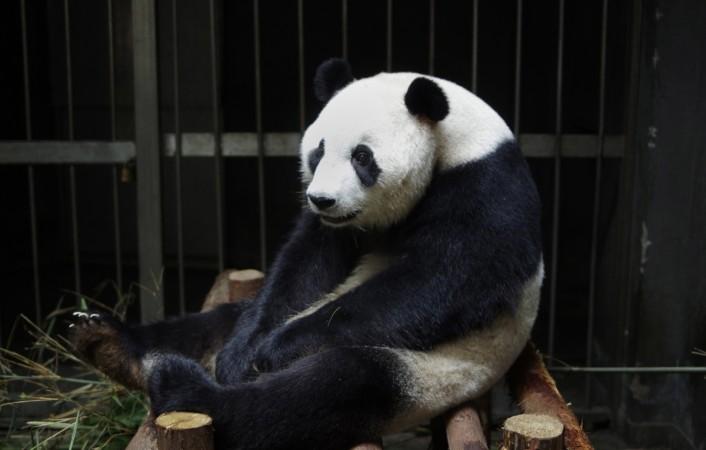Pandas — a formerly endangered species — have been pampered so much in captivity across the world that it is becoming increasingly difficult for them to be reintroduced in the wild.
A Global Times report dated February 18 enumerates several problems Chinese scientists are facing in "reintegrating 'spoiled' giant pandas into natural habitat."
It has said the species — which Beijing widely uses for diplomacy — may have been brought back from the brink of extinction, but most pandas now exist in captivity and may have become so used to human contact that they may not survive in the wild.
Captivity has also made them lose their libido, with the report saying that captive-born pandas hardly mate, which is counterproductive to all the efforts to not only preserve them but grow their numbers.
Female pandas have more recently been artificially inseminated, but they have at times led to exasperatingly hilarious results.
![[Representational image] Panda](https://data1.ibtimes.co.in/en/full/680533/panda.jpg?h=450&l=50&t=40)
Faking pregnancy to be pampered
There have been documented instances of pandas faking a pregnancy to get more food or even air-conditioning! A China Daily report said a panda named Yuan Yuan at Taipei Zoo in 2015 faked a pregnancy because pregnant pandas are moved to a single air-conditioned room, given round-the-clock care and are provided more fruit and bamboos to eat.
Experts were overjoyed when they saw in Yuan Yuan symptoms like a decrease in her appetite and other anatomical changes that signal a pregnancy in pandas. However, it all turned out to be for naught.
A year earlier, another panda named Ai Hin bamboozled experts at the Chengdu Giant Panda Breeding Research Center for two months with a fake pregnancy before they had to call off what they believed would have been the first live birth of a panda in captivity. The motivations, once again, were said to be an AC room, more care and food!
Ai Hin eventually delivered, but in 2016, according to a Xinhua report.

Previous attempts to introduce them in the wild failed
With pandas losing their mojo in captivity, there have been attempts to reintroduce them in the wild. A panda named Xiang Xiang was part of one such attempt, but the Global Times report said it was found dead in February 2007, having been introduced in the wild only the previous year.
The cause of death was believed to be the reintroduced panda falling to the ground from a height after fighting with a wild one from his species.
So why not train the captive pandas to be wild? Even that is difficult, because wild pandas are rarely seen, let alone observed for long periods to be studied.
Yang Jian, who has worked for panda conservation for 30 years at the Wolong National Nature Reserve in the Sichuan province of China, was quoted by the Global Times report as saying that he was seen a wild panda only thrice in his lifetime!
![A baby giant panda peeps out from behind a tree at Chengdu Research Base of Giant Panda Breeding in Chengdu, Sichuan province, China. [Representational image] A baby giant panda plays on a tree at Chengdu Research Base of Giant Panda Breeding in Chengdu, Sichuan province, China](https://data1.ibtimes.co.in/en/full/633644/baby-giant-panda-plays-tree-chengdu-research-base-giant-panda-breeding-chengdu-sichuan.jpg?h=450&l=50&t=40)
There are other problems as well. Panda expert Hu Zhichu was quoted by Global Times as saying: "Living in the wild and in an artificial environment are each very different. In terms of food, wild pandas eat bamboo shoots in the spring, bamboo in the summer and bamboo leaves in the autumn. In an artificial environment, they can eat whatever they want. Such eating habits are hard to change."
Conservationists are now looking at the problem from a different angle. There are now plans to lure a wild male panda into a "half-wild" environment and get it to mate with a captive female panda there.
The resulting cub would have genes from the wild panda and might be more suited to living outside captivity.

















